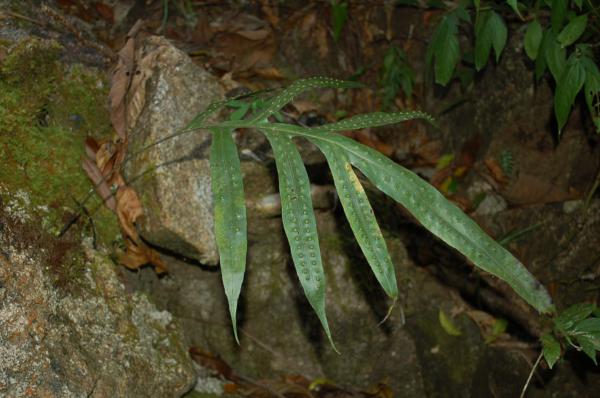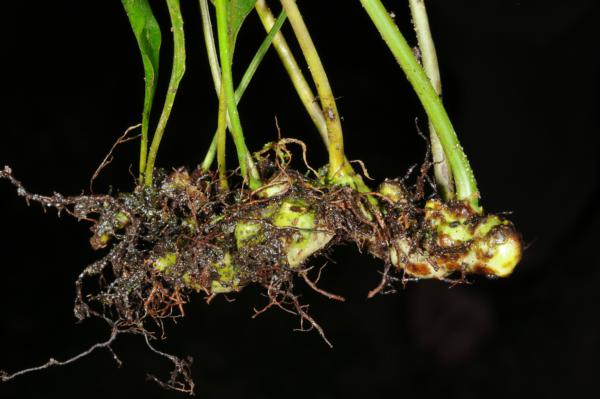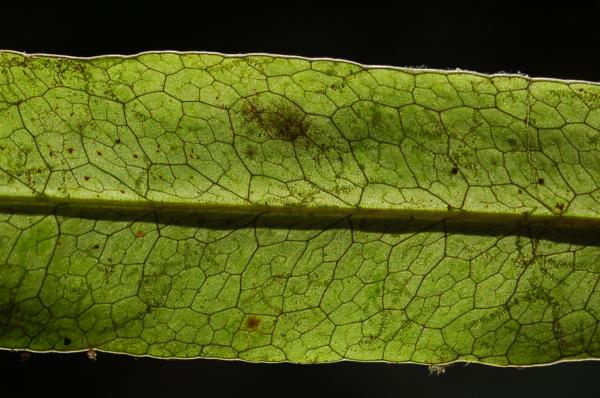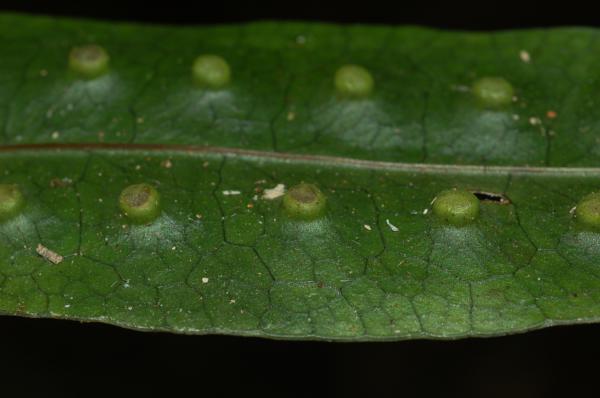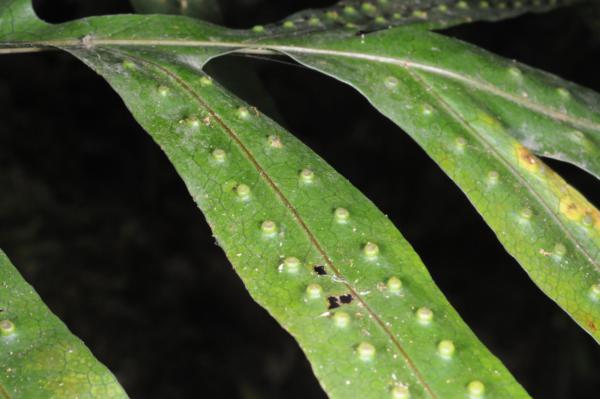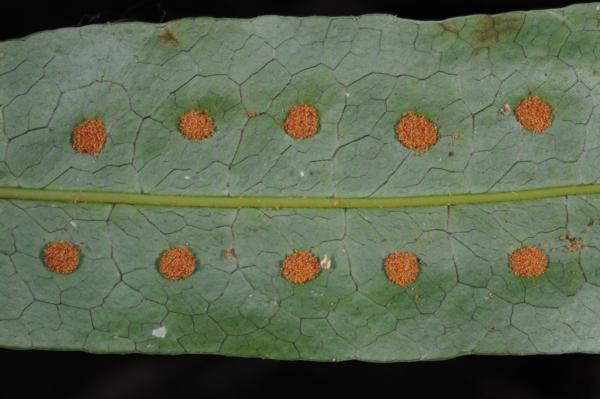
Phymatosorus membranifolius (R.Br.) S.G.Lu
Family
Polypodiaceae
Nomenclature
Phymatosorus membranifolius (R.Br.) S.G.Lu, Guihaia 19: 27. 1999. – Polypodium membranifiolium R.Br., Prodr.: 147. 1810. – Microsorum membranifolium (R.Br.) Ching, Bull. Fan mem. Inst. Biol. 10: 239. 1941; Nooteboom, Blumea 42: 339. 1997. – Type: Banks. s.n. (BM), Australia.
Polypodium nigrescens Blume, Enum. Pl. Javae: 126. 1828; Fl. Javae Fil.: t. 70. 1829; Christ, Bot. Tidsskr. 24: 105. 1901; C.Chr., Bot. Tidsskr. 32: 348. 1916. – Pleopeltis nigrescens (Blume) Carr. in Seem., Fl. Vit.: 368. 1873; Bedd., Handb. Ferns Brit. India: 367, f. 208. 1883. – Phymatodes nigrescens (Blume) J.Sm., Ferns Brit. For.: 94 1866; Tardieu & C.Chr., Fl. Indo-Chine 7(2): 473. 1941; Holttum, Rev. Fl. Malaya ed. 1, 2: 193, f. 95. 1955 [‘1954’]; Holttum, Dansk Bot. Ark. 20: 21. 1961; Holttum, Dansk Bot. Ark 23: 231. 1965; Seidenf., Nat. Hist. Bull. Siam Soc. 19: 86. 1958. – Microsorum nigrescens (Blume) Copel., Occas. Pap. Bernice Pauahi Bishop Mus. 14: 74. 1938; Tagawa & K.Iwats., SouthE. Asian Stud. 3(3): 77. 1965; Tagawa & K.Iwats., SouthE. Asian Stud. 5: 54. 1967; Tagawa & K.Iwats., Acta Phytotax. Geobot. 23: 53. 1968; Tagawa & K.Iwats., Fl. Thailand 3: 532. 1989. – Phymatosorus nigrescens (Blume) Pic.Serm., Webbia 28: 459. 1973; Boonkerd & Pollawatn, Pterid. Thailand: 282. 2000.
Polypodium alternifolium Willd., Sp. Pl. 5: 168. 1810. – Microsorum alternifolium (Willd.) Copel., Gen. Fil.: 197. 1947.
Phymatodes variabilis Ching, Bot. Mag. (Tokyo) 43: 3. 1929. – Phymatodes nigrescens var. variabilis (Ching) C.Chr. & Tardieu, Notul. Syst. (Paris) 8: 191. 1939; Tardieu & C.Chr., Fl. Indo-Chine 7(2): 473. 1941.
Description
Rhizome creeping, thick, about 1 cm diam., scaly; scales circular to oblong, round to moderately acute at apex, round at base, attached near the centre, minutely hairy at margin, about 5 mm in both directions, brown, more or less clathrate with thick internal cell-walls and not transparent surface walls, the internal wall gradually becoming thinner outwards. Stipes up to 50 cm long, stramineous, glabrous. Laminae pinnatisect nearly to rachis, subdeltoid to oblong, up to 80 by 40 cm; lateral lobes longest at base, or the basalmost ones a little reduced, gradually becoming smaller upwards, up to 30 by 4.5 cm, more or less ascending, usually straight, caudately acuminate at apex, subentire and nearly parallel at margin, somewhat narrowing towards base, up to 12 pairs; veins all distinct, forming areoles; papyraceous. Sori round, in distinct hollow in one row at each side of costa , about 4 mm diam., distinctly raised on upper surface.
Distribution in Thailand
EASTERN: Chaiyaphum, Nakhon Ratchasima; SOUTH-WESTERN: Uthai Thani, Kanchanaburi, Phetchaburi, Prachuap Khiri Khan; SOUTH-EASTERN: Prachin Buri; Chanthaburi, Trat; PENINSULAR: Chumphon, Ranong, Phangnga, Nakhon Si Thammarat, Phatthalung, Trang, Satun, Pattani, Yala, Narathiwat.
Distribution in Cambodia
Kampot, Kompong Speu.
Wider Distribution
Sri Lanka, S India, Vietnam, Cambodia, throughout Malesia and Polynesia.
Ecology
On rather dry rocks in mixed forests at low altitudes.
Proposed IUCN Conservation Assessment
Least Concern (LC). This species is widespread and not under any known threat.
Voucher specimens - Thailand
Middleton et al. 4677, Chanthaburi, Khao Khitchakut National Park (E); Middleton et al. 4705, Chanthaburi, Khao Soi Dao Wildlife Sanctuary (E); Middleton et al. 4382, Nakhon Si Thammarat, Khao Luang National Park (E); Middleton et al. 5422, Phatthalung, Lan Mom Jui Waterfall (E).
Habit
Habit
Rhizome
Venation
Upper surface of frond
Upper surface of frond
Sori and venation
Site hosted by the Royal Botanic Garden Edinburgh. Content managed by Stuart Lindsay, Gardens by the Bay, Singapore and David Middleton, Singapore Botanic Gardens. Last updated 24 January 2012
_TP_3637_sml.JPG)
